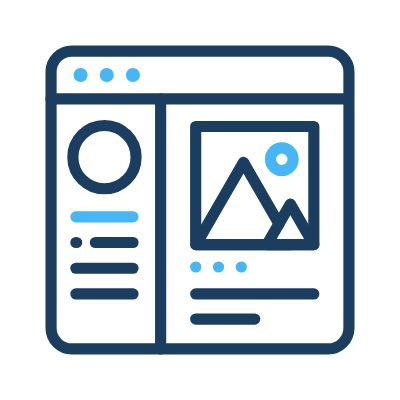
10 Essential Components of a Successful Careers Website
A careers website is so much more than the place you list your jobs. It’s the central hub of your talent attraction strategy. Not only should your site provide a streamlined path to the apply button, but it also needs to make it super clear why candidates should click it.
Candidates come to your career website to explore opportunities, understand your employer brand and determine if your company is the right fit for them. To build an effective site that attracts and converts top talent, you must focus on providing the following 10 components.
1) A window into your employer brand and working culture
The best career sites showcase your organisation’s culture and values across a range of pages. This allows candidates to learn more about your company beyond the jobs you have available.
This is your opportunity to communicate your Employer Value Proposition (EVP)— what makes your company unique and your roles irresistible.
Include compelling content that highlights:
- Your company’s mission and vision – find candidates that buy into your vision.
- How your organisation makes a difference – demonstrate the impact of your work on a local, national and global level.
- Employee testimonials and success stories – showcase real insights from existing employees to build trust.
- Sustainability and DEI initiatives – 55% of Gen Z candidates are “extremely interested” in environmental issues and 76% of job seekers consider a diverse workforce an important factor when choosing a job. So show them how much your business cares.
- Photos and videos showcasing your workplace culture – don’t just tell candidates how good your workplace is — show them!
A strong and authentic employer brand can make a lasting impression and help candidates envision themselves as part of your team.
2) An optimal user experience (UX)
User experience is a crucial factor in engaging job seekers. Having strong technical foundations is also important if you want your pages to rank highly in search engines.
Your career website must therefore be fast, accessible, and mobile-friendly, ensuring candidates can seamlessly browse job opportunities across all devices.

Consider these UX best practices:
- Responsive design – Ensure your site looks and functions well on desktops, tablets, and mobile devices.
- Speed optimisation – A slow-loading site can drive potential candidates away. Compress images and minimise scripts to improve performance.
- Accessibility – Follow web accessibility guidelines (WCAG) so that all candidates, including those with disabilities, can easily navigate your site.
Providing a frictionless experience means more candidates will stay engaged and complete their applications. Our guide to candidate UX on career sites explains more about the metrics we use to measure and improve UX.
3) Easily discovered jobs
Candidates and web crawlers alike should be able to find relevant job opportunities quickly and easily on your site. This means implementing user-friendly search functionality, JobPosting schema and dynamic vacancy listings across all relevant pages.
Key search features to consider include:
- Keyword search – Allows candidates to find roles based on job titles and skills.
- Location filters – Helps job seekers find opportunities in their preferred regions.
- Department and team filters – Enables candidates to explore specific areas of interest within your company.
A well-structured job search function means your candidates are never many clicks away from their most desired vacancy.
4) Engaging job description, role and team pages
Your career website should provide job description pages that are easily digestible, engaging and provide a clear path to application.
These pages should be pulled directly from your Applicant Tracking System (ATS). To maximise their reach, they should always be optimised for search engines, aggregators like Indeed and the Google for Jobs portal.
Role, team and location pages provide a deeper insight into different departments. Their job is to helps candidates understand the people, projects, and opportunities within the area of your business most relevant to them.
Featuring tailored employee testimonials, blog article links and team photos can further personalise these pages and increase engagement further.

5) Frequently asked questions (FAQ) sections
Candidates often have similar concerns before applying. An FAQ section can help address these common queries while also improving your visibility within search engines and AI platforms like ChatGPT.
Some questions to consider addressing:
- What is your recruitment process like?
- How long does the hiring process take?
- What benefits and perks do you offer?
- What’s the company culture like?
Providing clear answers to questions like these not only increases candidate engagement but builds visibility in search. You can also target unbranded questions being asked about relevant hiring areas, to cast your net even wider.
6) Multiple ways to engage with your employer brand
Not all candidates will be ready to apply immediately. Offering various engagement options helps you nurture talent and stay connected with both active and passive candidates.
Engagement features to consider:
- Job alerts – Allows candidates to subscribe to job notifications.
- Talent community sign-up – Captures passive candidates interested in future opportunities.
- Social media follows – Encourages candidates to stay updated by following your LinkedIn, Facebook and X accounts.
- Team contact options – Provides a way for candidates to connect directly with the recruitment team.
These touchpoints keep your employer brand top of mind and build a pipeline of potential applicants.

7) Employee advocacy and storytelling
Job seekers trust employee-generated content more than corporate messaging. So encourage your team to be brand ambassadors by sharing their experiences through:
- Employee-written blog posts – Provide a more in-depth insight into life in various teams.
- Social media takeovers – Present a diverse mix of internal views.
- Video testimonials – Showcase employee stories in a more visual and engaging way.
- Behind-the-scenes workplace stories – Help candidates to visualise themselves in a new role at your organisation.
These forms of employee advocacy are super powerful as they build credibility and provide an authentic insider’s perspective, which is sure to resonate with candidates.
8) Blog and industry insights
A blog section can add value to your site by offering more in-depth content on a range of career topics. These could include:
- Industry news, statistics and trends – Show you are a leading light in your industry.
- Career advice and employee stories – Support candidates at the start of their journey and showcase how you do this once they take up their role.
- CV and interview tips – Put candidates at ease with all stages of the application process.
- DEI and sustainability successes – Highlight real statistics, stories and photos that demonstrate the difference your organisation is making.
Regularly updating your blog establishes your company as a thought leader in your industry. It can also reengage previous site visitors and attract new candidates through search.
9) Effective source-to-hire tracking
Understanding how the best candidates find your career website is critical for measuring and planning your talent attraction strategy.
The source-to-hire tracking our analytics team puts in place allows you to measure the effectiveness of different channels, such as job boards, paid social campaigns and organic search.
This means you can:
- Identify which sources drive the highest quality applications
- Optimise your recruitment marketing budget
- Refine your content strategy based on candidate behaviour
With greater data-driven insights, you can refine your strategy and make informed decisions about where to invest your resources.
10) Personalisation features
Another innovative way to improve the performance of your careers site is to tailor the user experience to individual candidates.
This can be achieved by building clever personalisation features like the following, which streamline the candidate’s journey through your site:
- Relevant vacancies – List the most relevant vacancies at the bottom of pages, based on which location and team pages the candidates has viewed during their session.
- Dynamic homepage – Change the imagery and wording of the homepage, based on where a candidate is located, to highlight the office likely to be of most interest.
- Restart your journey – Display links for returning visitors, which signpost pages they previously viewed. So they can quickly revisit the areas of that most interest them.
- Saved jobs – Functionality that allows candidates to save vacancies, so they can quickly find jobs when they return to the careers site.
These advanced features will help your site stand out head and shoulders above the competition. Better still, they’ll help to boost that all important application completion rate.
How can our experts help?
We have worked with leading employers across the UK and overseas to build and refine career sites, providing a platform that attracts top talent and turns more candidates into applicants.
From career site builds and ATS enhancements to SEO and Google for Jobs optimisation, our specialists are here to help you achieve your recruitment goals.
To find out more about our work at Enhance Media, take a look at our case studies and clients pages, or contact our team to chat about your requirements.
- Topics:
- Careers Websites
- News






